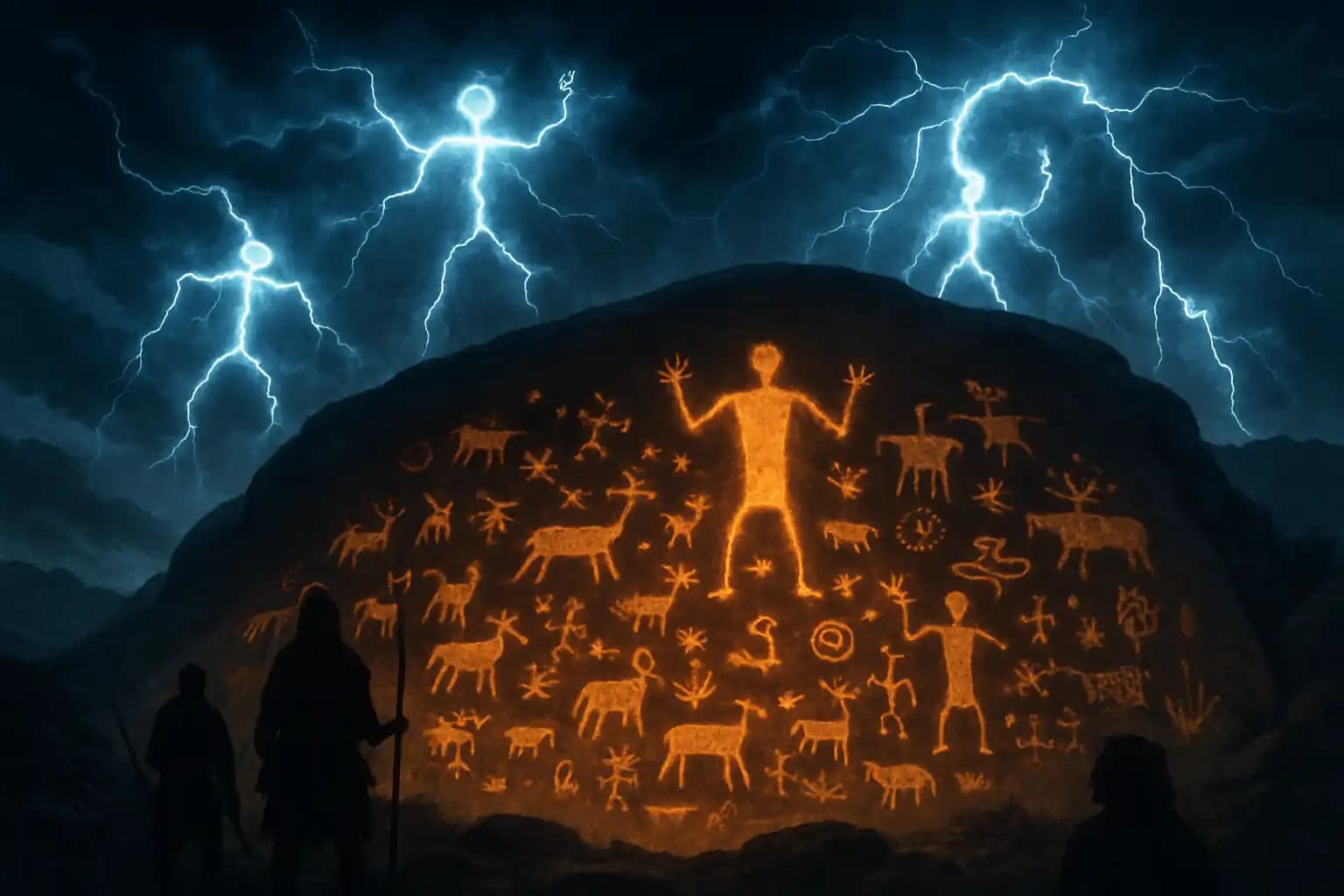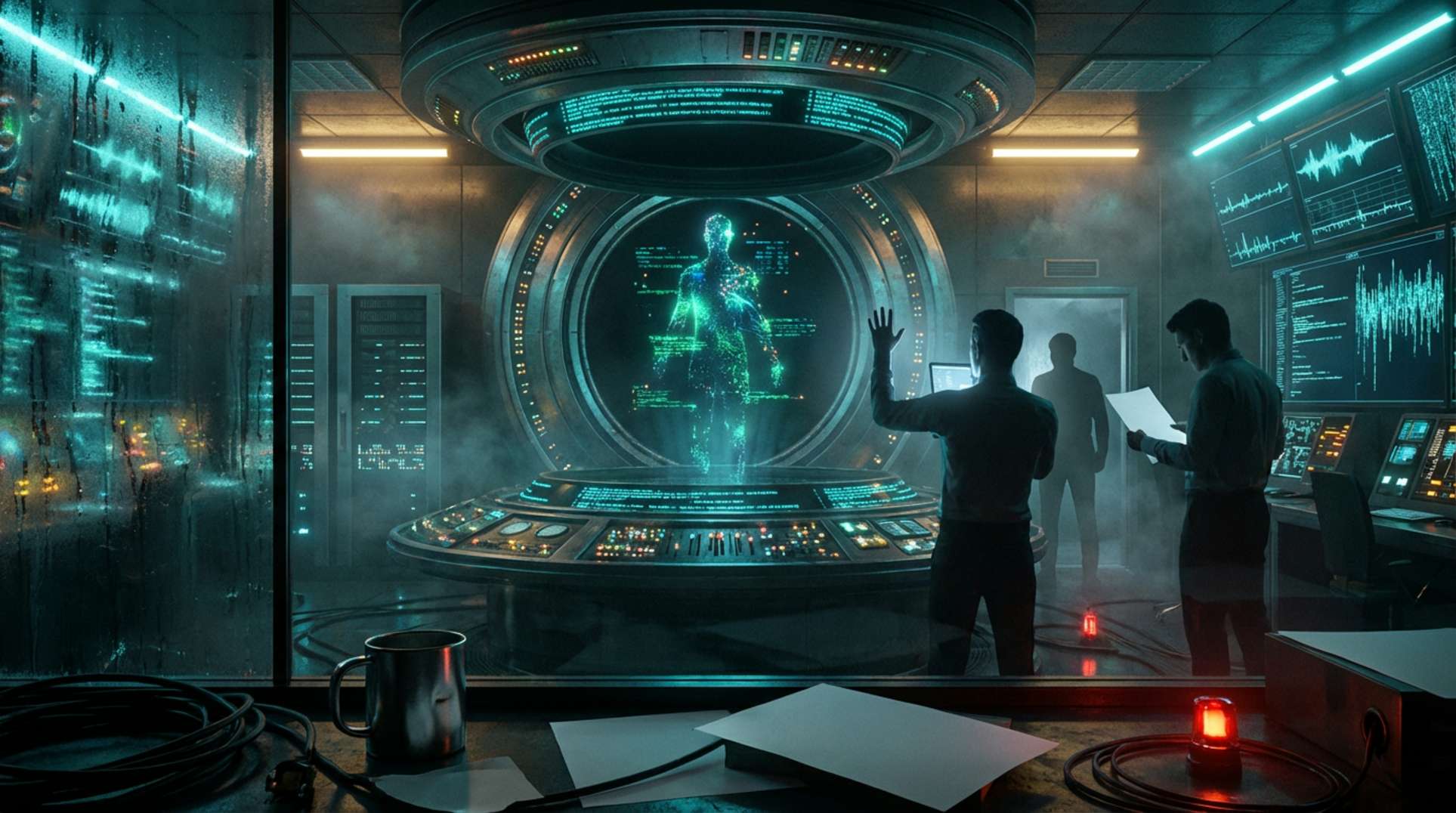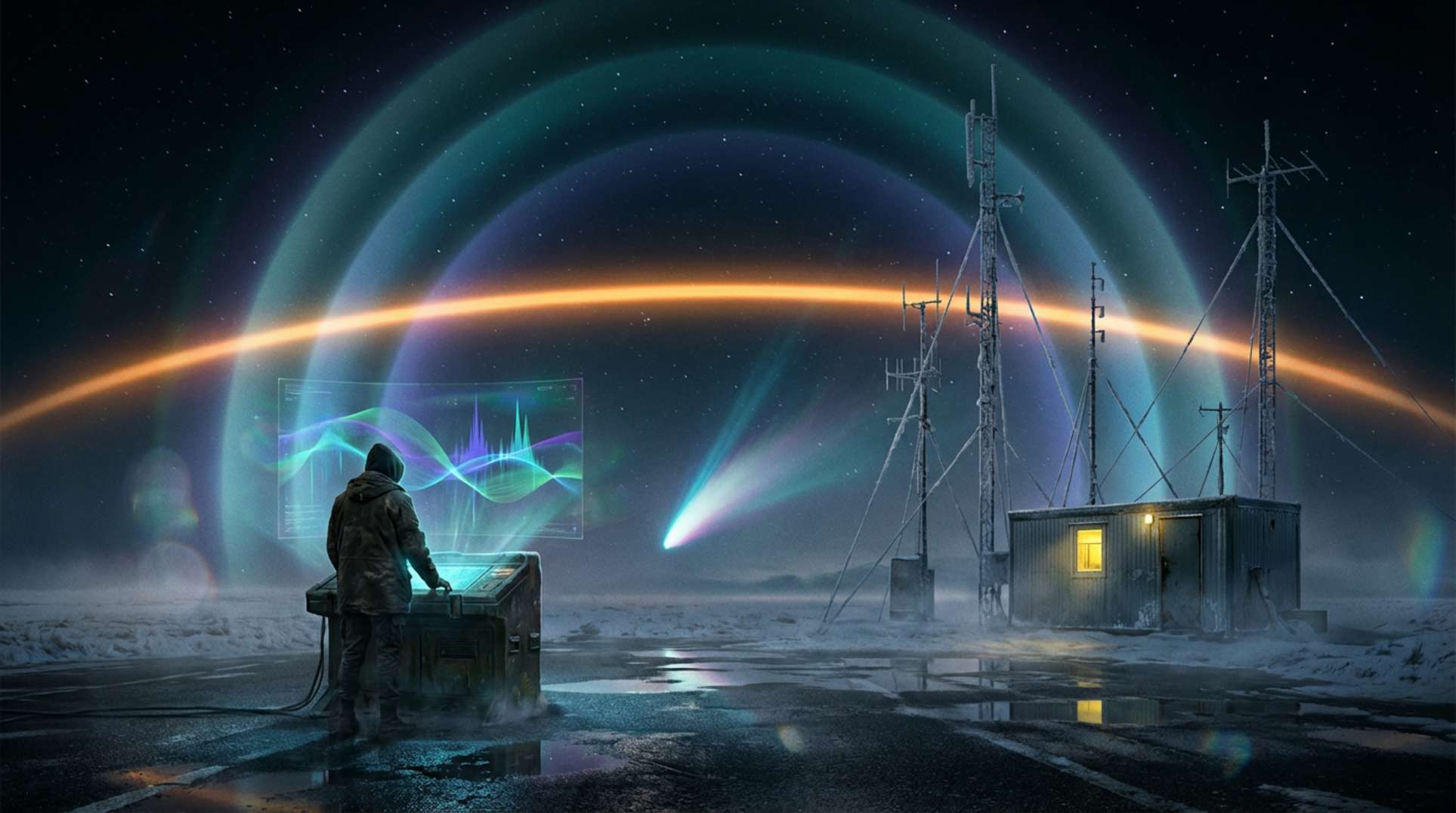Imagine huddling beneath the night sky, not in idle stargazing, but in fear as blinding shapes—columns, squiggles, and humanoid figures—flare overhead, burning into your retinas and stone. Fast-forward a few millennia, and those scrawls, painstakingly etched onto places like Newspaper Rock, become mysteries for a modern world eager to explain them as shamanic visions or tribal tales. But what if we’ve got it all wrong?
Enter the plasma glyph theory, where physicists and a few bold academics suggest petroglyphs might record awe-inspiring, earth-shattering plasma discharges in Earth’s atmosphere—witnessed at a scale rarely seen by humans today. This reinterpretation ignites controversy and curiosity at Utah’s Newspaper Rock, a storyboard of prehistoric events that may have cosmic roots.
From Petroglyphs to Plasma: The Electric Storyboard Explained
A standard explanation of petroglyphs portrays them as ritualistic or communicative rock art—see the Wikipedia entry on petroglyphs. However, plasma physicist Anthony Peratt’s research launched a lightning bolt into the field. He identified uncanny similarities between carved figures worldwide and plasma discharge patterns observed in high-energy laboratory experiments. Peratt and others contend that the ‘stick men,’ spirals, and forked lines found on Newspaper Rock and other sites might be eyewitness depictions of plasma instabilities in the ancient sky, as described in his analysis of “stickman” patterns and on archived interviews.
This concept goes beyond scientific curiosity; it revolutionizes our approach to rock art. It merges cutting-edge plasma physics—where charged filaments dance in cosmic displays—with anthropology, challenging assumptions about ancient humans and global cataclysms. The implications ripple through comparative studies of megalithic sites and even hint at reinterpretations of enigmatic lunar findings, like those revealed in China’s recent Moon missions.
Eyes Wide Open: Shifting Paradigms in Ancient History
If carved shapes are literal eyewitness records, we must rethink not just prehistory but also the forces shaping it. The resemblance of Newspaper Rock’s looping and branching figures to simulated plasma discharges (see Peratt’s supercomputer reconstructions) strengthens the argument that our ancestors chronicled global electromagnetic phenomena—possibly triggered by solar storms or rare cosmic events. This re-contextualizes the cataclysmic lens often applied to geologic events, like the resets discussed in this deep-dive on megafloods or the significant role of solar-driven upheavals in Earth’s history.
Might our ancestors have witnessed fierce aurora-like events that flooded the world with fear and inspiration—or inspired tales of gods, monsters, and the end times? Patterns in these petroglyphs span from North American deserts to the ruins of forgotten civilizations, suggesting a shared, extraordinary experience. It’s a hypothesis linking cosmic disaster, electrical engineering, and humanity’s collective myth-making.
Newspaper Rock Reinterpreted: Catastrophe Etched in Stone
The “plasma glyphs” on Newspaper Rock—far from being mere prehistoric mailing lists—may represent a storyboard of catastrophe, hope, and adaptation. In this reading, the various figures etched onto stone become collective memory: a warning and reminder of the world’s volatility. These are not idle tales, but survival manuals, guiding communities through millennia of uncertain skies, akin to encoded doomsday prepping in prehistoric form. This approach resonates with warning systems woven into modern studies of grid-down scenarios and the ancient impulse to document cycles of upheaval, as analyzed in major cycle research.
The neuroscience of fear and awe—the emotion that might drive someone to chisel cosmic shapes into stone—intersects intriguingly with present-day encounters, from sleep paralysis to unsettling AI errors, unpacked in this deep analysis of digital uncanny. Throughout time, the drive to document the unknown remains relentless.
A Universe Written in Stone—And Still Speaking
Plasma glyph theory’s greatest legacy might not be rewriting history but daring us to question the orthodoxies of science and culture. Whether you view Newspaper Rock as a cosmic diary or a skeptic’s icon, the mystery invites open eyes—and no fear. The cross-disciplinary buzz is contagious, drawing connections as diverse as those from time machine speculation to experimental particle physics and prophecy.
The next time you visit a petroglyph panel, remember: you may be reading not only a tribe’s story but also the shock, terror, and genius of humanity’s earliest scientists. For more on these mind-bending mysteries—cosmic, cultural, or otherwise—keep your senses sharp with the latest from Unexplained.co. There’s always another layer to the carvings if you dare to look.





